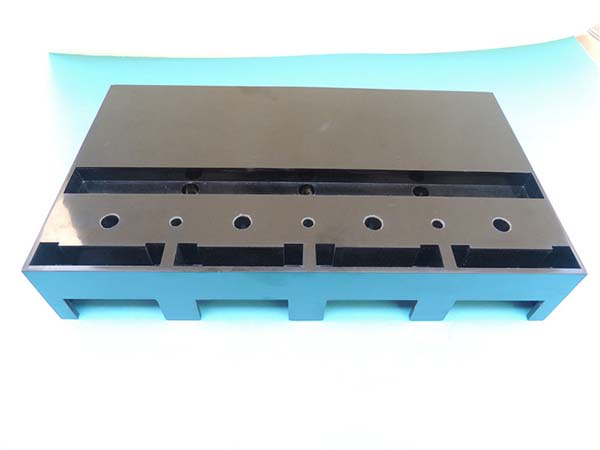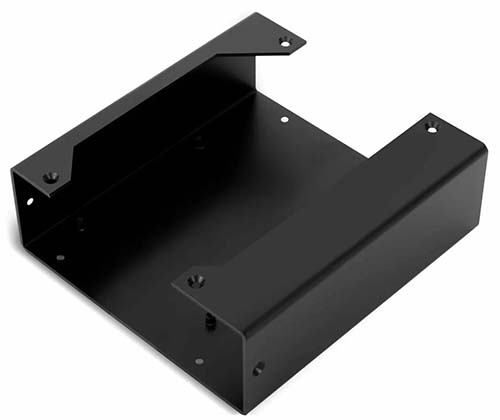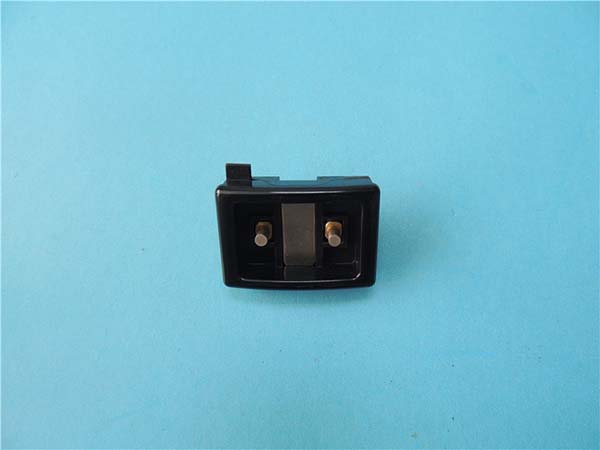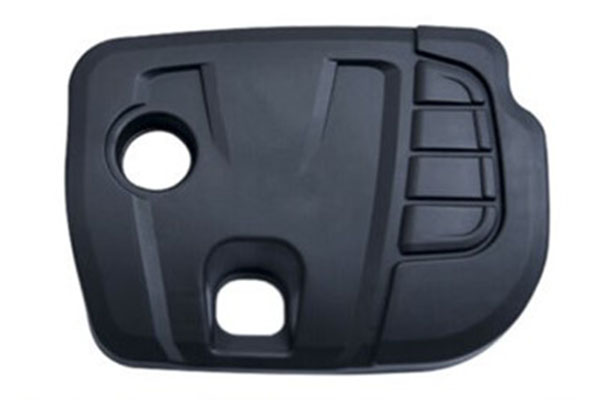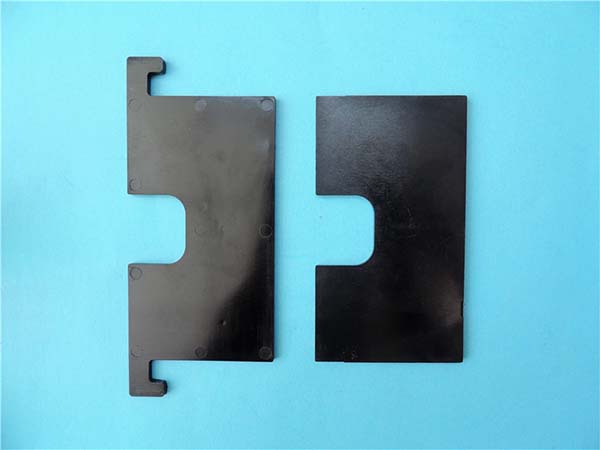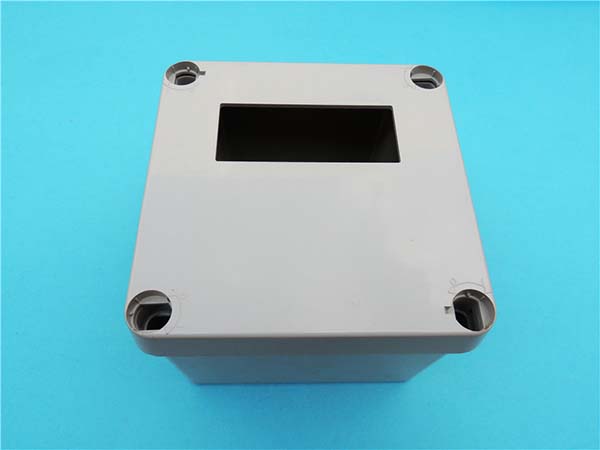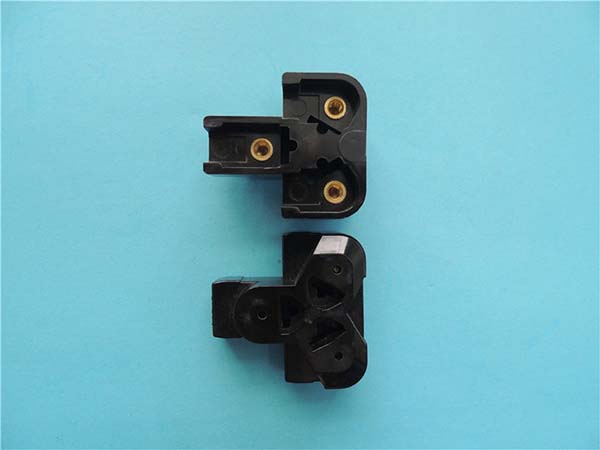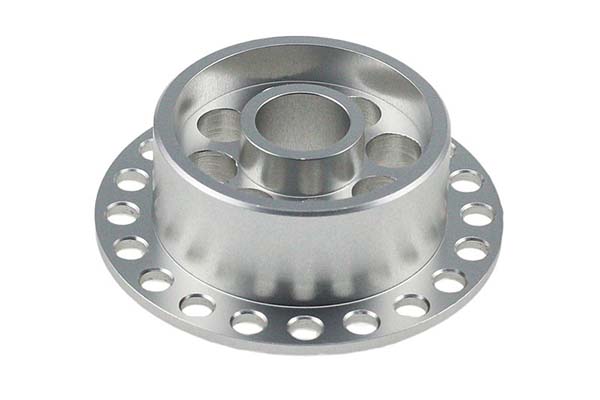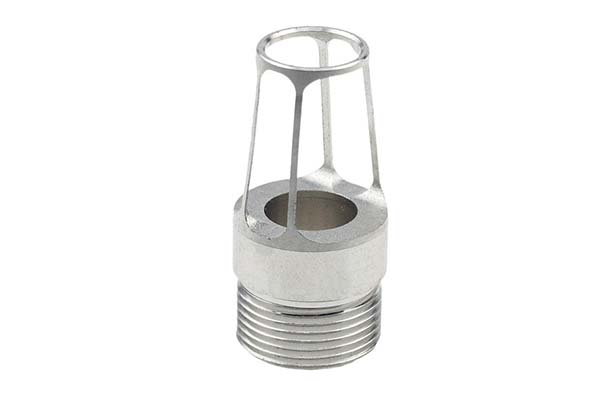Introduction
In the dynamic landscape of product development, rapid prototyping has emerged as a game - changer. It allows companies to transform their design concepts into tangible models in a relatively short time. This not only accelerates the product development cycle but also provides an opportunity to test and refine the design before mass production. For instance, in the consumer electronics industry, companies can quickly create a prototype of a new smartphone design to check its ergonomics, functionality, and user - friendliness.
However, one question that often looms large in the minds of businesses and innovators is: "What is the cost of rapid prototyping?" Understanding the cost associated with rapid prototyping is crucial as it directly impacts the overall product development budget. Whether you are a startup with limited funds or a large - scale enterprise looking to optimize costs, having a clear insight into rapid prototyping costs can help you make informed decisions. In this article, we will explore the various factors that influence rapid prototyping costs, different cost - effective strategies, and how to accurately estimate these costs. By the end, you'll be better equipped to manage your resources and make the most of the rapid prototyping process.
Factors Affecting Rapid Prototyping Cost
Material Selection
The choice of materials in rapid prototyping has a significant impact on the cost. Different materials come with varying price tags. For plastic materials, PLA (Polylactic Acid) is relatively affordable, with a price range of approximately \(20 - \)50 per kilogram. It is often used for simple prototypes and educational purposes due to its low cost and ease of use. On the other hand, engineering plastics like ABS (Acrylonitrile Butadiene Styrene), which offer better mechanical properties such as higher strength and heat resistance, can cost around \(50 - \)150 per kilogram.
When it comes to metal materials, aluminum is a popular choice. It has a relatively low density and good corrosion resistance. The cost of aluminum for rapid prototyping is approximately \(100 - \)300 per kilogram. Titanium, known for its high strength - to - weight ratio and excellent biocompatibility, is much more expensive, with a price range of \(1000 - \)3000 per kilogram. This makes it suitable for high - end applications in aerospace and medical fields but less common for budget - constrained projects. In short, the material you choose can make or break your budget, so it's crucial to select based on your project's requirements.
Prototyping Technology
There are several rapid prototyping technologies, each with its own cost characteristics.
| Prototyping Technology | Cost Characteristics | Applicable Scenarios |
| 3D Printing (FDM) | Low - cost entry - level 3D printers can be as low as a few hundred dollars. Material cost per part is relatively low, usually \(5 - \)50 depending on the material. However, the printing speed is slow, which can increase labor cost for large or complex parts. | Ideal for small - scale, simple prototypes, such as product design concepts, small - batch custom - made products. |
| 3D Printing (SLA) | Higher - end SLA 3D printers can cost several thousand dollars. The resin materials used are more expensive, with a cost of \(50 - \)200 per liter. But it offers high - precision and smooth surface finish. | Suitable for creating highly detailed prototypes, like jewelry models, dental prosthetics prototypes. |
| CNC Machining | Equipment costs are high, with industrial - grade CNC machines ranging from tens of thousands to hundreds of thousands of dollars. Material waste can be significant, adding to the cost. Labor cost is also relatively high due to the need for skilled operators. | Best for high - precision parts, complex - shaped metal components, and medium - to - large - scale production runs. |
| Injection Molding | High initial investment for mold creation, which can cost from a few thousand to tens of thousands of dollars depending on complexity. Once the mold is made, the per - part production cost is low for high - volume production. | Appropriate for mass production of plastic parts with consistent quality requirements. |
3D printing, for example, is great for quickly creating complex geometries at a relatively low initial investment, especially for small - scale projects. CNC machining, on the other hand, is more suitable for high - precision parts but comes with higher equipment and labor costs.
Complexity of the Design
The complexity of the design plays a crucial role in determining the cost of rapid prototyping. A simple, straightforward design with basic geometric shapes, like a cube or a cylinder, is relatively easy and inexpensive to produce. For instance, a simple plastic cube prototype made through 3D printing might cost only \(10 - \)30 in materials and a short amount of printing time.
However, a complex design with intricate details, undercuts, and internal structures significantly increases the production difficulty and cost. Consider a prototype of a mechanical watch movement with tiny gears and complex linkages. Such a design would require more advanced prototyping techniques, like SLA 3D printing or high - precision CNC machining. The material cost would be higher due to the need for high - quality, durable materials. The labor cost would also soar as it requires more time for design optimization, programming (in the case of CNC), and post - processing to achieve the desired level of detail and functionality. The cost for such a complex prototype could easily reach several hundred or even thousands of dollars.
Quantity of Prototypes
The quantity of prototypes produced has a direct impact on the cost. Generally, the cost per unit decreases as the quantity increases. This is because the fixed costs, such as equipment setup, design fees, and tooling (if applicable), are spread out over a larger number of units.
For example, if you are making a single prototype using 3D printing, you might bear the full cost of the material for that one part, plus the machine operation cost for that specific print job. Let's say it costs \(50 for the material and \)30 for machine operation, so the total cost for one prototype is \(80. But if you produce 100 prototypes, the machine operation cost and other fixed costs might only increase slightly, say to \)200 in total, while the material cost for 100 parts is \(5000. So the cost per unit drops to approximately (\)5000 + \(200) / 100 = \)52.
The following graph illustrates the relationship between the quantity of prototypes and the cost per unit:
[Here you can insert a simple line graph with the x - axis representing the quantity of prototypes (ranging from 1 to 1000 for example) and the y - axis representing the cost per unit. The line should show a decreasing trend as the quantity increases]
In summary, understanding these factors is essential for accurately estimating and managing the cost of rapid prototyping.
Cost Comparison Among Different Prototyping Methods
3D Printing
3D printing has a wide range of cost components. The equipment cost can vary greatly. Entry - level Fused Deposition Modeling (FDM) 3D printers, which are popular among hobbyists and for basic prototyping, can cost as little as \(200 - \)1500. These printers use thermoplastic filaments like PLA or ABS. For example, a simple FDM - printed plastic prototype of a small product enclosure, which might take 5 - 10 hours to print, with about 200 - 500 grams of PLA filament (costing around \(5 - \)10), could have a total material and printing cost of \(10 - \)30.
Stereolithography (SLA) 3D printers, on the other hand, are more expensive, starting from around \(3500 for desktop models. They use liquid resin materials. Printing a highly detailed jewelry prototype with an SLA printer might require 3 - 5 hours of printing time and 100 - 200 milliliters of resin (costing around \)10 - \(30). Considering the higher cost of the printer and the resin, the overall cost for this small, detailed prototype could be \)30 - $80.
CNC Machining
CNC machining costs are influenced by multiple factors. The equipment cost is high, with industrial - grade CNC machines often costing tens of thousands to hundreds of thousands of dollars. For instance, a mid - range 3 - axis CNC milling machine suitable for small - to - medium - scale prototyping can cost around \(50,000. The machining time is a significant cost driver. If a complex metal part requires 10 - 20 hours of machining time, and the hourly rate (including machine operation, labor, and overhead) is \)50 - \(100, the machining cost alone could be \)500 - $2000.
When comparing 3D printing and CNC machining, 3D printing is generally more cost - effective for small - batch, highly complex prototypes with intricate geometries. For example, creating a small, custom - designed mechanical part with internal cavities and complex surfaces would be cheaper with 3D printing in terms of both equipment and production costs. However, for high - precision, large - scale production of parts with tight tolerances, like automotive engine components, CNC machining is more suitable, despite its higher initial investment and per - part production cost for small quantities.
Other Prototyping Methods
Injection molding, another common prototyping method, has a high upfront cost for mold creation. A simple injection mold for a plastic part can cost \(2000 - \)10,000, depending on its complexity. But once the mold is made, the per - part cost for high - volume production (e.g., producing 1000 or more parts) can be as low as \(0.5 - \)5, making it ideal for mass - producing plastic components with consistent quality requirements.
Vacuum casting is also used for prototyping, especially when creating small batches of parts with the look and feel of injection - molded products. The cost of vacuum casting is relatively lower than injection molding for small quantities. A small batch of 10 - 50 parts might cost \(50 - \)200 per part, including material and labor costs, but it is limited in terms of the materials that can be used compared to injection molding. Each method has its own cost - benefit profile, and choosing the right one depends on the specific needs of the prototyping project.
Tips to Reduce Rapid Prototyping Cost
Simplify the Design
A complex design often leads to higher prototyping costs. When designing a prototype, focus on the core functionality and eliminate any unnecessary features. For example, avoid creating overly intricate shapes or details that do not contribute significantly to the product's performance.
Let's take the case of a consumer electronics company. They were developing a new smartwatch prototype. Initially, the design included a highly complex, curved display with a unique bezel design that had multiple grooves and patterns. The estimated cost for prototyping this design using 3D printing was around \(500 per unit due to the need for specialized printing techniques and longer printing times. After simplifying the design, removing the unnecessary grooves and opting for a more straightforward bezel shape, the cost dropped to approximately \)200 per unit. This significant cost reduction was mainly due to a shorter printing time and the ability to use standard 3D printing materials and techniques.
Optimize Material Usage
Efficient material usage can lead to substantial cost savings. One way to do this is by considering the size of the prototype and choosing the appropriate - sized material blocks. For instance, if you are creating a small plastic prototype, don't purchase a large sheet of plastic that will result in a lot of wasted material. Instead, look for pre - cut smaller pieces that match the dimensions of your prototype as closely as possible.
Material recycling and reuse can also play a crucial role. In some 3D printing processes, unused or excess filament can be recycled. There are now filament recyclers available on the market that can turn waste filament into usable spools again. A small startup that used 3D printing for prototyping found that by recycling their waste PLA filament, they were able to reduce their material costs by about 30%. They calculated that for every \(100 they spent on new PLA filament initially, they could save \)30 by recycling the waste filament.
Choose the Right Prototyping Service Provider
When selecting a prototyping service provider, price should not be the only factor. However, it is important to get quotes from multiple providers to ensure you are getting a fair price. Look at the quality of their previous work. A provider with a portfolio of high - quality prototypes is more likely to deliver a good - quality prototype for your project. For example, if they have successfully created prototypes with tight tolerances and smooth surface finishes in the past, they are more likely to meet your quality requirements.
Experience also matters. A service provider with years of experience in the field is more likely to handle any potential issues during the prototyping process efficiently. They may have better - optimized processes, which can lead to cost savings. A company that had been struggling with high prototyping costs switched to a more experienced provider. The new provider was able to suggest design modifications based on their past experience, which reduced the overall cost by 20%. They also had more efficient production schedules, which cut down on labor costs. In summary, choosing the right prototyping service provider can have a significant impact on both the quality and cost of your rapid prototyping project.
Yigu Technology's Viewpoint
As a non - standard plastic metal products custom supplier, Yigu Technology understands the significance of cost - effective rapid prototyping. We have rich experience in material selection. For example, when clients have budget - constrained projects, we recommend more cost - efficient plastic materials like PLA for initial prototypes. This not only meets the basic functional requirements but also saves costs.
In terms of process optimization, our team of experts analyzes each design thoroughly. We simplify complex designs without sacrificing functionality, which can reduce production time and cost. Our advanced manufacturing equipment and skilled technicians ensure high - quality prototyping while keeping costs in check. We also offer customized solutions based on the quantity of prototypes required. By doing so, we help clients get the best value for their money, making the rapid prototyping process more affordable and efficient.
FAQs
Q1: How can I estimate the cost of my rapid prototyping project?
To estimate the cost, first, determine the material you'll use. Research the market price of the selected material per unit (e.g., per kilogram for plastics or metals). Then, assess the complexity of your design. Simple designs are less costly. Consider the prototyping technology; different methods have different cost structures as shown in the comparison above. For example, if you choose 3D printing, calculate the material cost based on the volume required for your part and the cost per unit volume of the filament or resin. Add the machine operation cost, which may be based on the printing time. If it's CNC machining, estimate the machining hours and multiply by the hourly rate that includes labor and equipment costs.
Q2: Is 3D printing always the cheapest option for rapid prototyping?
No, 3D printing is not always the cheapest option. While it has a relatively low initial investment for small - scale projects and is great for creating complex geometries, in some cases, other methods can be more cost - effective. For large - scale production of simple - shaped parts with tight tolerances, CNC machining may be a better choice despite its higher equipment and labor costs for small quantities. Injection molding, although it has a high upfront cost for mold creation, becomes very cost - efficient for high - volume production. For example, if you need to produce 10,000 simple plastic parts, injection molding will likely have a much lower per - part cost compared to 3D printing.
Q3: How can I ensure the quality while reducing the rapid prototyping cost?
One way is to choose the right material. Don't always go for the cheapest material; instead, select one that meets the basic quality requirements of your prototype. Communicate clearly with your prototyping service provider about the quality standards you expect. For example, if surface finish is crucial, make sure the provider understands and can achieve it. Optimize the design to ensure that the manufacturing process is as smooth as possible. A well - designed part is less likely to have production issues that could lead to rework or low - quality output. Also, consider the experience and reputation of the service provider. A more experienced provider is more likely to produce a high - quality prototype within your budget.
